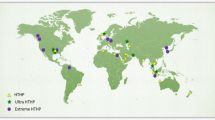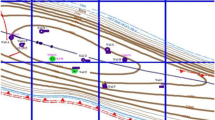Abstract
As per the American Petroleum Institute (API) definition, completion fluid is defined as a brine-, oil-, or gas-based fluid that is used as isolation (kill, separation, inhibition functions, etc.) fluid during the completion of a well. Novel magnesium bromide-based completion fluid exhibits high density and solid free. If design completion fluid is not solid free, then it will cause formation damage and plugging and eroding of tubular and completion equipment. The completion fluid must be high density to provide sufficient density for well control and mechanical stabilization of the wellbore. We have investigated the effects of aging on the rheological properties of completion fluid such as plastic viscosity (PV), apparent viscosity (AV), yield point (YP), gel strength, shear stress, pH, and specific gravity. In this experiment, base salt is taken as magnesium bromide in hexahydrate form and the rheology temperature range is considered 85–185 °F. The rheology properties of formulated 12.91-lb/gal, specific gravity 1.55 completion fluid are investigated before heat roll (BHR) at an aging time (hr.) initial 0 h and after heat roll (AHR) at aging time 16 h for hot-rolled (HR) temperature 320 °F using Bingham plastic rheological model. The experimental results showed that the magnesium bromide-based clear completion fluid exhibits high specific gravity of 1.55, 12.91-lb/gal and pH in alkaline region to mitigate the corrosion issues. This study aims to evaluate the effect of rheological behavior under prolonged exposure time, and temperature (aging process) for reservoir conditions.










Similar content being viewed by others
Abbreviations
- HDCF:
-
High-density completion fluid
- BP:
-
Bingham plastic model
- CF:
-
Completion fluid
- API:
-
American petroleum institute
- BHR:
-
Before hot rolled
- AHR:
-
After hot rolled
- τ :
-
Shear stress, (lbf/100 ft2 or 0.48 Pa)
- γ :
-
Shear rate, (s−1)
- AV:
-
Apparent viscosity, (cP or mPa. s)
- GS 10 s:
-
Initial gel strength, (lbf/100 ft2 or 0.48 Pa)
- GS:
-
Gel strength, (lbf/100 ft2 or 0.48 Pa)
- YP:
-
Yield point, (lbf/100 ft2 or 0.48 Pa)
- GS 10 min:
-
Final gel strength, (lbf/100 ft2 or 0.48 Pa)
- PV:
-
Plastic viscosity, (cP or mPa. s)
- τ 0 :
-
Yield point, (lbf/100 ft2 or 0.48 Pa)
- ϕ :
-
Dial reading (deg.)
- ppg:
-
Lb/gallon, lb/gal
- s.g.:
-
Specific gravity
References
Hossain, M.E.; Al-Majed, A.A.: Fundamentals of sustainable drilling engineering. John Wiley & Sons, United states (2015)
Caenn, R.; Darley, H.C.; Gray, G.R.: Composition and properties of drilling and completion fluids, 6th edn. Gulf Professional Publishing, Oxford, UK (2011)
Tariq, Z.; Kamal, M.S.; Mahmoud, M.; Hussain, S.M.; Abdulraheem, A.; Zhou, X.: Polyoxyethylene quaternary ammonium gemini surfactants as a completion fluid additive to mitigate formation damage. SPE Drill. Complet. 35(04), 696–706 (2020)
TETRA Technologies.Inc: Engineered Solution Guide for Clear Brine Fluids and Filtration. Second Edition, Chapter-2, 5, https://tetratec.com/
Olivier, D.A.: Improved completion practices yield high productivity wells. Pet. Eng., (1981)
McLeod Jr.; H.O.: The effect of perforating conditions on well performance. In: Formation Damage Symposium, SPE Paper No.10649, Lafayette, LA, March 24–25 (1982)
Klotz, J.A.; Krueger, R.F.; Pye, D.S.: Maximum well productivity in damaged formations requires deep, clean perforations. In: Formation Damage Symposium, SPE Paper No. 4792, New Orleans, February 7–8 (1974). https://doi.org/10.2118/4792-MS
Ezzat, A. M.: Completion fluids design criteria and current technology weaknesses. In: SPE Formation Damage Control Symposium. Society of Petroleum Engineers (1990). https://doi.org/10.2118/19434-MS
Shadravan A.; Amani M.: HPHT 101-what every engineer or geoscientist should know about high pressure high temperature wells. In: SPE Kuwait International Petroleum Conference and Exhibition (2012)
Hoang, T.A.: Mechanisms of scale formation and inhibition. In: Amjad, Z.; Demadis, K.D. (Eds.) Mineral scales and deposits, 1st edn., pp. 47–83. Elsevier, Cambridge, MA, USA (2015)
Vineet, S.; Subhash, N. S.: Rheological Performance of Polymers in Heavy Brines for Workover and Completion. In: American Association of Drilling Engineers, AADE-14-FTCE-35, Texas, April 15–16, (2014)
Fogang, L.T.; Kamal, M.S.; Mahmoud, M.: Development of viscosified acid-surfactant solutions for oilfield applications: rheological properties. J. Energy Res. Technol. 143(2), 023001 (2021)
Awele, N.: Investigation of additivies on drilling mud performance with “Tonder geothermal drilling” as a case study, master degree thesis, department chemical engineering, Aalborg University, Denmark (2014)
Kelessidis, V.C.; Tsamantaki, C.; Pasadakis, N.; Repouskou, E.; Hamilaki, E.: Permeability, porosity and surface characteristics of filter cakes from water–bentonite suspensions. WIT Trans. Eng. Sci. 56, 173–182 (2007)
Lide, David R.: Handbook of Chemistry and Physics. 87th ed., CRC Press. ISBN 0–8493–0594–2, Boca Raton, Florida, 4–67 (1998)
National Center for Biotechnology Information PubChem Compound Summary for CID 17749097, Magnesium bromide hexahydrate. Retrieved September 4, (2021) from https://pubchem.ncbi.nlm.nih.gov/compound/Magnesium-bromide-hexahydrate.
Murtaza, M.; Alarifi, S.A.; Kamal, M.S.; Onaizi, S.A.; Al-Ajmi, M.; Mahmoud, M.: Experimental investigation of the rheological behavior of an oil-based drilling fluid with rheology modifier and oil wetter additives. Molecules 26(16), 4877 (2021)
Ibeh, C.; Schubert, J.; Teodoriu, C.: Investigation on the effect of Ultra-High Pressure and Temperature on the Rheological Properties of Oil-Based Drilling Fluids. In: AADE Conference and Exhibition, Houston, Texas (2008)
Gowida, A.; Elkatatny, S.; Abdelgawad, K.; Gajbhiye, R.: Newly developed correlations to predict the rheological parameters of high-bentonite drilling fluid using neural networks. Sensors 20(10), 2787 (2020). https://doi.org/10.3390/s20102787
API Recommended Practice 13B-1: Recommended Practice for Field Testing Water-Based Drilling Fluids, American Petroleum Institute, Washington, DC (2003)
Elkatatny, S.; Kamal, M.S.; Alakbari, F.; Mahmoud, M.: Optimizing the rheological properties of water-based drilling fluid using clays and nanoparticles for drilling horizontal and multi-lateral wells. Appl. Rheol. 28(4), (2018)
Grace Instrument M3600 Viscometer operation manual, US Patent: 6,571,609, Grace Instrument Company, 1660 Townhurst Drive, Building G, Houston, Texas 77043 U.S.A.
Masikewich, J.; Bennion, D.: Fluid design to meet reservoir issues - a process. J. Can. Petrol. Technol. (1999). https://doi.org/10.2118/99-05-05
Elert, G.: Viscosity-The physics hypertextbook (2010). URL https://physics.info/viscosity/. Accessed 18 July 2021
Khatibi, M.; Potokin, N.; Time, R.W.: Experimental investigation of effect of salts on rheological properties of non-Newtonian fluids. Ann. Trans. Nordic Rheol. Soc. 24, 117–126 (2016)
Alakbari, F., Elkatatny, S., Kamal, M.S., Mahmoud, M.: Optimizing the gel strength of water-based drilling fluid using clays for drilling horizontal and multi-lateral wells. In: SPE Kingdom of Saudi Arabia Annual Technical Symposium and Exhibition, One Petro (2018)
Downs, J.D.: Formate Brines: Novel Drilling and Completion Fluids for Demanding Environments. In: SPE 25177 presented at International Symposium on Oilfield Chemistry, New Orleans, Louisiana (1993)
Maxey, J.: Rheological analysis of static and dynamic sag in drilling fluids. Ann. Trans. Nordic Rheol. Soc. 15, 181–188 (2007)
AlAbdullatif, Z., Al-Yami, A., Wagle, V., Bubshait, A., Al-Safran, A.: Development of new kill fluids with minimum sagging problems for high pressure jilh formation in Saudi Arabia. In: Abu Dhabi International Petroleum Exhibition and Conference (2014). https://doi.org/10.2118/171683-MS
Acknowledgements
This research is supported by a PAN India project of the Indian Institute of Technology (IIT), Madras, India, and ONGC (Oil and Natural Gas Corporation Ltd.), India. The first author is supported by the internal research grants of IIT Madras and Ministry of Human Resource Development (MHRD), India scholarship scheme: OE17D303.
Author information
Authors and Affiliations
Corresponding author
Rights and permissions
About this article
Cite this article
Singh, R., Sharma, R. & Rao, G.R. Aging Effects on the Rheological Properties of Novel Magnesium Bromide Hexahydrate-Based Completion Fluids for Oil and Gas Reservoirs. Arab J Sci Eng 47, 11929–11939 (2022). https://doi.org/10.1007/s13369-022-06798-2
Received:
Accepted:
Published:
Issue Date:
DOI: https://doi.org/10.1007/s13369-022-06798-2




